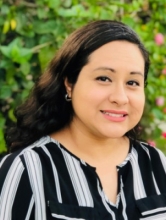Dr. Elise Wilkerson, Sara McAlister, Lindsey Foster, and Dr. Wendy Perez
Culturally responsive and sustaining education (CRSE) is a humanizing approach to learning that explores the relationship between historical and contemporary conditions of inequality and ideas that shape access, participation, and outcomes for learners[1]. Key features of culturally responsive and sustaining education include:
- Youth and family voices are essential for informing the educational experience[2]
- Educators must possess a deep understanding of their culture and the cultural ways of knowing their students[3]
- Critical consciousness is a key feature of pedagogy that helps students to connect historical and contemporary events to engender engagement and skill-building that fosters learning
- Culture is not static it is fluid; and pedagogical approaches should be fluid as well [4]
- Young people create and push culture and youth culture should be leveraged as an asset for learning[5]
Evidence suggests that CRSE is promising for the socioemotional and academic thriving and identity development of linguistically, culturally, and racially diverse children and youth. While many approaches to CRSE have been conceptualized for school environments, limited research exists on how these approaches and practices can inform out-of-school-time (OST) programs for youth. Yet, OST programs provide youth opportunities to develop leadership skills, engage in social action, co-design programming, cultivate critical consciousness and socioemotional skills, and connect with and affirm their intersectional identities[6]. Therefore, could CRSE practices be applied to out-of-school-time (OST) programs to promote positive youth development?
This article highlights 5 tips for creating CRSE youth programs. These tips emerged from our leading and supporting three research studies, housed at NYU Metro Center, that examined how community-based organizations, youth organizing groups, and youth leadership councils shape young people’s learning, leadership, well-being, identity, and critical consciousness. (The full brief is an installment of the Center for Policy, Research, and Evaluation’s Research Brief Series on Family and Youth Voice.)
Tip #1: Recruit and Support Staff Who Reflect the Identities and or Communities of Youth
Across our research studies, youth leaders intentionally hired staff that reflected the backgrounds of and experiences of the youth in their programs. One OST organization did this by hiring program alum. Another OST organization, which focused on fostering leadership among girls and gender expansive youth, did this by hiring gender expansive staff. In most OST programs in our research studies, organizational leaders supported program staff by offering them professional development opportunities to develop an awareness of social-political ideas and learn practical skills for appropriately leveraging these ideas during programs. While no identity group or community is a monolith, our findings suggest that matching the identities of program staff to the identities and local cultures helps to create a context where young people see themselves reflected in leadership.
Recommendations
- Recruit staff who come from the same communities as the youth your organization serve
- Hire staff who have the qualities and desire to affirm, celebrate, and support youth
- Incorporate staff members' cultural knowledge and skills into program planning and curriculum development
Tip #2: Create Welcoming Spaces that Foster Agency and Belonging
The creation of welcoming spaces in OST programs lends itself to increased feelings of belonging and collaboration among youth. Across the three studies, adult staff created welcoming spaces by providing youth opportunities to share their opinions on school-based issues without being interrupted, dismissed, or misunderstood by the adults. Adult staff avoided monopolizing conversations with youth or centering their experiences and perspectives. We learned that when youth-serving adults (i.e., adult staff) monopolized conversations, it stifled young people’s sense of safety to express themselves. By providing youth opportunities to develop their own ideas, critically question each other, and create solutions to problems, young people felt valued, heard, and understood.
Recommendations
- Provide young people ample opportunities to express themselves
- Avoid centering adult perspectives
- Adults should guide youth, supporting young people’s creativity and critical thinking. Do this by asking youth what they want to talk about, what they need from programming, and what they are curious about
Tip #3: Create Opportunities for Critical Consciousness Building
Critical consciousness is understood as one’s understanding of social inequity and the desire to address social inequity. Critical consciousness is shaped by a person’s identities and experiences with their environment. Adolescence is a particularly important time for critical consciousness development as young people have the capacity to understand complex ideas such as power, oppression, and injustice. OST programs have the opportunity to help young people make sense of their experiences and the world around them when adults staff, who can relate to them, create welcoming environments where young people’s voices and perspectives are valued.
Across the three studies, youth-serving adults fostered critical consciousness through structured enrichment activities and or open dialogue about current events or issues that youth faced. For example, in one OST program, the adults provided activities that encouraged young people to analyze historical events through poems and songs that critique stereotypes. In a different OST program, critical consciousness was fostered using an African-centered curriculum, rituals, and practices that decentered dominant narratives of Black youth. Finally, we also found that having open dialogue required that adult staff should engage in critical consciousness development as well. Interrogating their own positionality regarding race, gender, nationality, and sexuality enhanced adult staff’s ability to connect authentically with youth.
Recommendations
- Use curriculum that decenters dominant narratives, is reflective of diverse youth’s experiences, and calls into question systemic inequality
- Make space to learn together with youth about inequities and their community
- Offer professional development support focused on power and oppression so that adult staff feel confident facilitating conversations around historical and contemporary issues related to racism, gender, gender identity, immigration, SES, if and when they arise during programming
Tip #4: Create Opportunities for Youth to Lead
Regardless of the focus of the OST program, providing young people opportunities to lead fosters positive youth development. Across the three studies, opportunities for authentic decision-making and leadership were central to young people’s deep engagement with and connection to their out-of-school time spaces. We learned that as a result of support and modeling from staff, young people assumed responsibility for facilitating group discussions, prioritizing issues, and making decisions through consensus. More experienced leaders participated in outreach and recruitment of new members and consciously stepped back from leadership roles to make space for new leaders to develop. Young people worked directly with adult facilitators to plan meeting agendas and activities and led icebreaker and team-building activities and facilitated large- and small-group discussions. As a result of these leadership opportunities, youth felt a sense of belonging and ownership over the program.
Recommendations
- Embed opportunities for decision-making, co-construction, and leadership
- Consider creating informal or formal (e.g., advisory board) roles for program participants and alumni to participate in decision-making at the program or organization level
- Provide opportunities and support for young people to work with peers to address issues that directly affect their lives
Tip # 5: Create Opportunities for Youth Creativity, Expression, and Reflection
Fostering creativity through artistic expression can help young people “make sense of the world and sustain who they are,” by employing a range of modes to support self-definition and self-celebration. Art and expression have a long history within critical approaches to engage young people, from the theater of the oppressed to hip-hop pedagogy. In only one of the research studies, art served as a tool for young people to exercise their voice, process emotions, and dream of new possibilities. Creativity and art took a range of forms including visual arts such as filmmaking, drawing, writing, painting, and performing arts, such as spoken word and song creation. Essentially, the use of art empowered youth to integrate academic skills (e.g., writing, critical thinking) with critical consciousness, allowing youth to make meaning of their experiences, and witness the expression of others’ meaning making.
Recommendations
- If the OST program is arts-based, incorporate lessons that help youth celebrate their identities and cultures and allow them to make meaning of contemporary and historical events
- If the OST program is not arts-based, consider incorporating activities that allow youth to creatively express themselves. Doing this in a responsive way, for example, may involve young people free writing and reflecting on current events together or anchoring a lesson plan in a song that captures what youth might be feeling at the moment (e.g., “Alright” by Kendrick Lamar)
Summary
Implementing a new program or redesigning an existing program that embodies CRSE features requires intentionality and strategic planning. While there are no one-size-fits-all approaches to CRSE work, positive youth development can be fostered by carefully curating OST programs with staff that reflect the backgrounds of youth, so adolescent program participants have the opportunity to lead and build their critical consciousness. As a result, youth feel affirmed, celebrated, and safe to express themselves.
[1] The Culturally Responsive-Sustaining Education Framework. http://www.nysed.gov/crs/framework
[2] Simpkins, S. D., & Riggs, N. R. (2014). Cultural competence in afterschool programs. New Directions for Youth Development, 144, 105-117. doi:10.1002/yd.20116
[3] Ladson-Billings, G. (1995). Toward a theory of culturally relevant pedagogy. American educational research journal, 32(3), 465-491.
[4]Paris, D. (2012). Culturally sustaining pedagogy: A needed change in stance, terminology, and practice. Educational researcher, 41(3), 93-97.
[5] Alim, H. S., Paris, D., & Wong, C. P. (2020). Culturally Sustaining Pedagogy. Handbook of the cultural foundations of learning, 261-276.
[6] Milner IV, H. R., Murray, I. E., Farinde, A. A., & Delale-O’Connor, L. (2015). Outside of school matters: What we need to know in urban environments. Equity & Excellence in Education, 48(4), 529-548.



